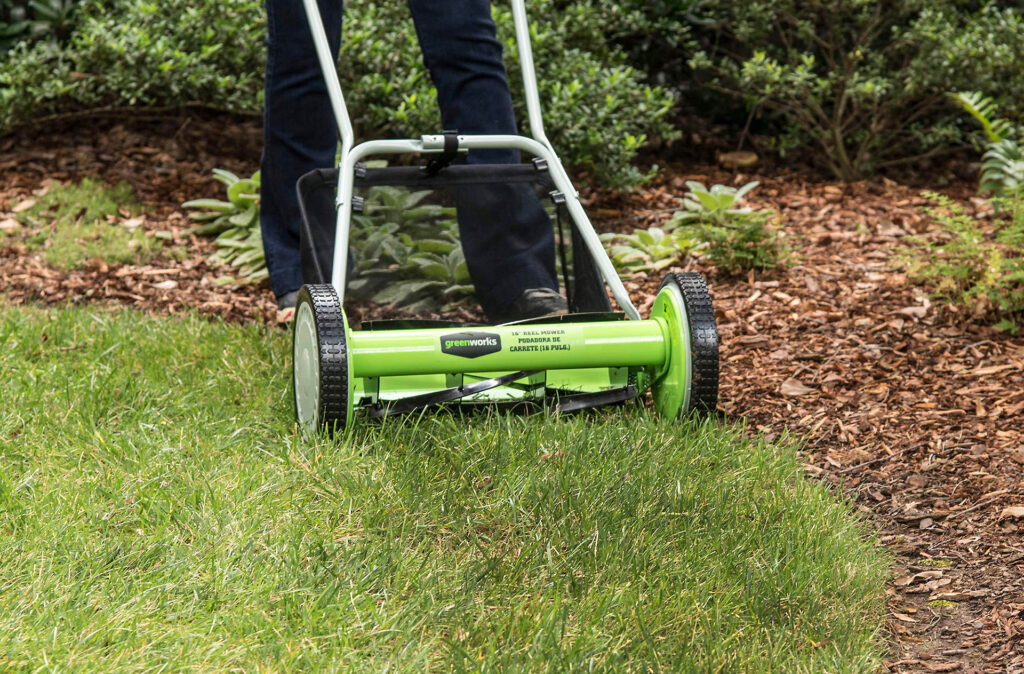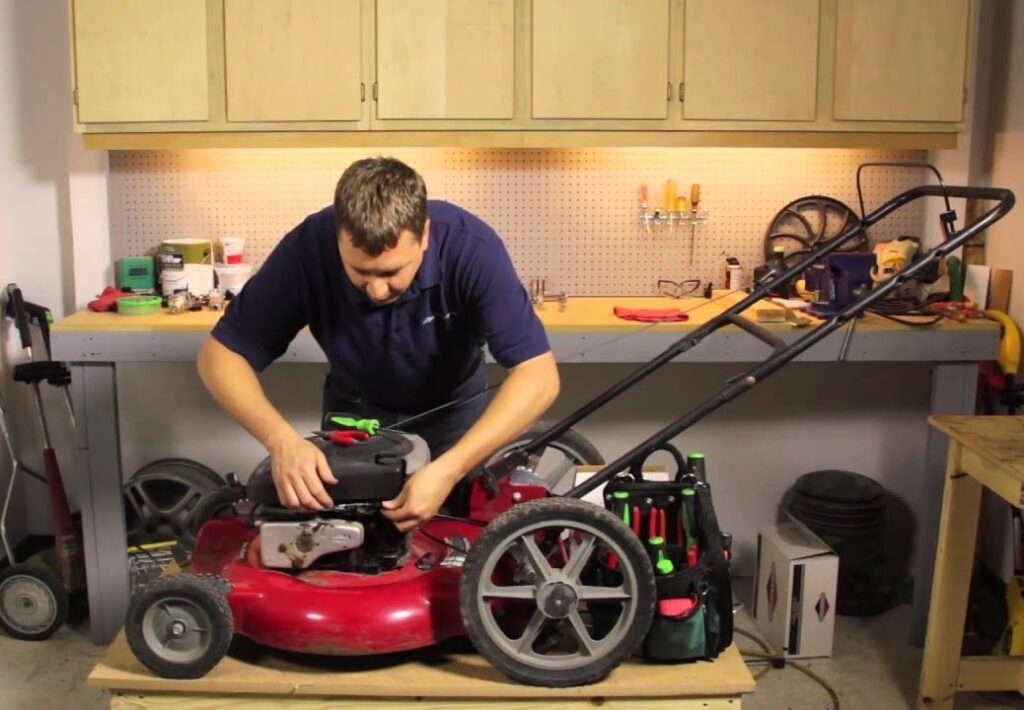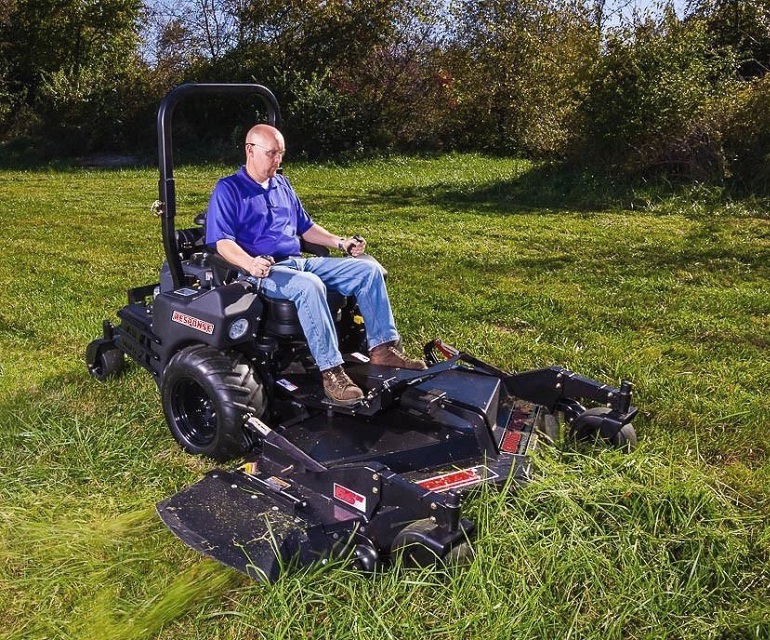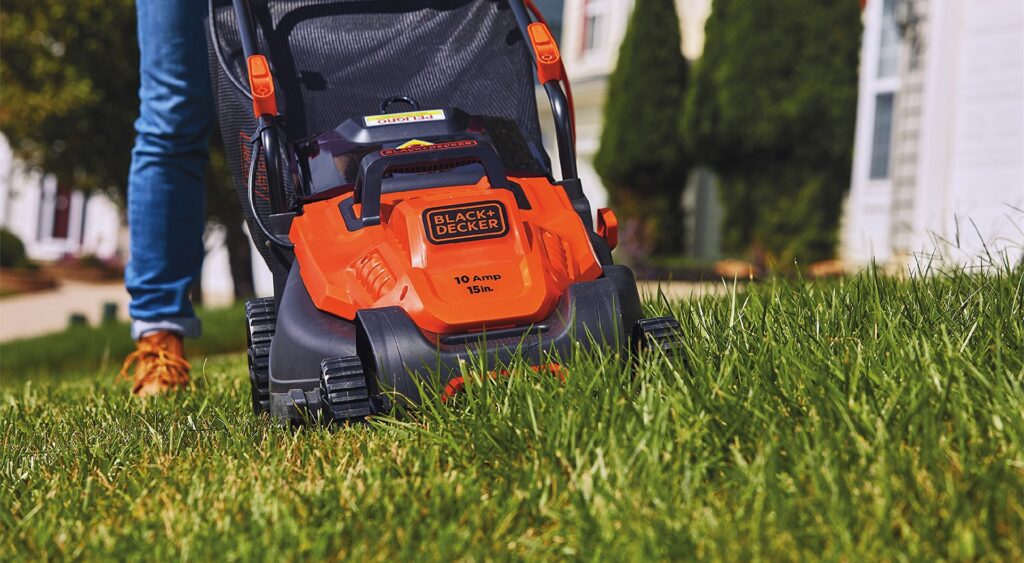
You know that lawnmowers aren’t exactly the easiest machines out there. But how much does a riding lawn mower weigh?
It depends on the unit, but the average weight of these products is from 450 to 500 pounds. You can find some lighter lawn mowers that don’t weigh over 300 pounds. However, the heaviest units often go to 600 pounds or even exceed that limit.
Why are riding mowers so heavy? We asked that question ourselves, so we consulted experts and conducted thorough research. In this article, you’ll learn more about the different components of lawnmowers with specific consideration of their weight. Some information might surprise you, such as the fact that engine size isn’t crucial in deciding how heavy the product will be.
We’ll also talk about various product types, such as zero-turn and electric mowers. You’ll even learn how to adjust the machine’s weight to better suit your requirements.
You’ve probably seen land mowers before, so you know how these devices look. Each product contains multiple components, and they can all affect their weight. Here is an overview of the components found in a riding mower and how they influence the total product weight.
The engine is a crucial component of any mower because it powers it and ensures it can do its job. You probably assume that the engine can significantly affect the riding lawn mower weight. And while you’d be right, the influence is not as strong as you might expect.
According to experts, the engine components feature around 20-25 percent of a lawnmower. That roughly means the engine will weigh anywhere from 70 to 120 pounds or more. However, the exact weight depends on the manufacturer and the unit.
It’s interesting to note that the weight doesn’t have to directly determine the engine’s power. For example, you can find units whose engines weigh 84 pounds and feature 16HP. However, some machines that come with a 27HP engine only weigh 90 pounds. It’s only five pounds of difference, and the horsepower is almost double. That’s why the experts agree that you’ll find other components affect total weight more than the actual engine.
Some units are heavier, even though they belong to compact and small lawnmowers. You’ll find that products with 12HP motors often come weighing around 300-350 pounds, while 24HP machines can go up to 550 pounds. A larger and heavier unit is usually more suitable for large backyards and commercial properties.
For commercial use, our experts highly recommend the Swisher Z3166CPKA since it is a powerful and versatile zero-turn mower. The unit has an impressive strength of 31HP, but it also weighs over 1,000 pounds. The weight contributes to the stability and ensures the machine can take care of any lawn quickly.
Here is a quick overview of the components found in a lawn mower’s deck:
You’ll also find other hardware with only a single purpose – ensuring the machine is assembled properly and works optimally. All these components are a part of a machine’s deck, and they usually weigh at least 70 pounds. Although it depends on the unit, the maximum weight rarely goes over 150 pounds. The general rule is that the best commercial lawn mowers come with a heavier deck but also a larger total weight than those intended for homeowners.
It seems logical that the shell is the bulkiest and heaviest part of a deck. Depending on the manufacturer, the usual material used is steel or an alloy that’s equally heavy. It’s important to add to the weight because it needs to be stable.
Now, you’ll find spindles with blades on the deck, too. It’s the manufacturer’s call how many spindles they’ll add. The usual choice is two, but some products might contain three. However, a deck with three spindles can weigh over 120 pounds, which significantly increases the overall product’s weight. As for the belts, covers, and chutes, the odds are they won’t change the total weight much.
It’s crucial to pinpoint that a heavy deck isn’t necessarily a bad thing. After all, it’s the deck that will keep your machine in one piece when you go over rocks and other rough surfaces. That’s why you shouldn’t worry about a few extra pounds – they often contribute to the stability and durability of the machine.
The third major component in lawnmowers includes wheels. Now, the wheels aren’t usually that heavy, but they are an important component of this machine. Without wheels, it would be impossible to move the unit around and do the actual mowing.
The first thing you notice is that the front wheels are usually lighter than the back ones. If we are talking about compact-sized units, you’ll even find these wheels weigh only eight pounds. The back wheels will depend on the mower’s size and its class. If it’s a heavy-duty product designed for commercial use, the rear wheels can weigh over 100 pounds. It’s because they use solid polyurethane tires for added durability.
Now, you might be aware that you can adjust the weight of your lawnmower. If it seems that it’s not heavy enough, you can add weight around the wheels. These accessories come under the name wheel weight. Numerous brands offer official weights for their units because they are aware different users might have different requirements.
While we are on the topic, let’s mention that sticking to the official accessories is always helpful. If you need to replace a part, getting one designed by the same company is important. However, there isn’t much difference when it comes to wheel weights. These are durable and long-lasting products, and the odds are they’ll even last longer than the entire machine. If that turns out to be the case, you’ll benefit from universal weights. That way, you can remove them and add them to any other mower.
It’s time to discuss zero-turn mowers Trusted Source Zero-turn mower - Wikipedia A zero-turn riding lawn mower (colloquially, a z-turn) is a standard riding lawn mower with a turning radius that is effectively zero when the two drive wheels rotate in opposite direction, like a tank turning in place. en.wikipedia.org , which are the specific machine type designed for mowing residential backyards. You’ll find these units are also called Z-turn mowers because their turning radius is “zero.” The common method of achieving this turning radius is by controlling each drive wheel with hydraulic speed control.
How much does a zero-turn mower weigh? You’ll find that they are heavier than the standard riding mowers, even if they are smaller in size. That’s because manufacturers put high-quality engines in these units. Their deck is stable and durable, which means they are suitable for maintaining demanding landscapes. That’s why finding the best zero-turn mower for hills shouldn’t be difficult since these units are designed for challenging tasks.
As for the actual weight of the zero-turn mowers, it varies significantly. You’ll find light models for residential use, and they could weigh anywhere from 250-400 pounds. The heavier models are around 800 pounds, while there are machines that exceed the 1,200-pound mark.
Are you looking for a reliable ZTR lawn mower for your yard? Consider the Ariens IKON XD 42 that weighs 252 pounds, which is surprisingly light for such a powerful unit. The product comes with a Kawasaki FX600 engine, and the 13 cutting positions available ensure you’ll easily find the desired adjustment.
As the name suggests, electric mowers use batteries to operate. It’s a critical switch from conventional mowers that use gas during operation. The deck construction of electric mowers is similar to the zero-turn units. It aims to maintain stability, so it needs to be reasonably heavy. However, even the decks can be lighter than in gas-powered units, and that’s usually because their total size is smaller.
Now, an electric engine is lighter than the gas-powered one. That has to do with the technology advancing since it enabled manufacturers to reach a more compact size for electric units. The engines don’t weigh as much, but batteries still add to that weight significantly. Now, some manufacturers go with the approach that a spindle on each blade has a separate motor. Therefore, it’s another reason to increase the total weight. That’s why the ultimate difference between the heaviness of the electric and gas mower engines might not be that big.
You’ll find electric zero-turn mowers primarily serve residential users. It’s the limitation of battery power and duration that causes the lack of commercial electric models up to this point. You might find some brands advertising their products as suitable for commercial use, but the truth is that we’ll need to be patient to see professional machines for commercial landscapes.
You found the best riding lawn mower for your requirements, and it suits your needs well. However, you could still benefit from adjusting its weight in some situations. What if you need to load the mower into the truck? Perhaps you noticed that the stability could be better while you are mowing?
The good news is that you can both decrease and increase the lawn mower’s total weight. For example, a full tank of gas adds around 13 pounds to the machine. It’s not a significant change, but loading the tank to the top (or emptying it) is a start to adjusting weight.
Here is an overview of the other ways to adjust how heavy your mower is.
While light mowers are excellent for residential use, you might want to add some weight for extra stability. You can consider finding a wider deck, which can increase the total weight by approximately 50 pounds. It’ll also be beneficial because it adds stability to the unit without the actual engine having to bear more pounds. That can also extend the battery life in some electric lawnmowers.
We already mentioned wheel weights as a popular method of adding extra pounds to your machine. It’s even possible to make them at home, but you’ll need to know your way around the concrete.
What if you want your lawnmower to weigh less than now? You might appreciate a lighter unit, but that usually ensures getting a new and lighter deck. This isn’t always cheap, which is why you should consider a used deck.
Another way to decrease the weight is to replace the wheels. If there are weights on the wheels, you can start by removing them, and you’ll notice the machine is significantly lighter overall. Alternatively, you can go with lighter wheels and decrease the weight up to 35-40 pounds.
As you can see, there’s a wide variety of lawn mowers available in the market. Their components vary, ranging from motor power to overall stability and durability. It’s crucial to consider your expectations and then look for a suitable unit.
How much does a riding lawn mower weigh? That might be one of your first questions, and we hope our article covered it properly. You now have the information on how each component can adjust the total weight of the machine. It’s crucial to note that commercial lawn mowers usually weigh more than residential. It’s because they are more powerful and stable, which is necessary to ensure efficient maintenance of large surfaces. Finally, extra weight doesn’t necessarily have to be a bad thing. It adds to the stability, which can make the entire mowing process easier and more efficient.





